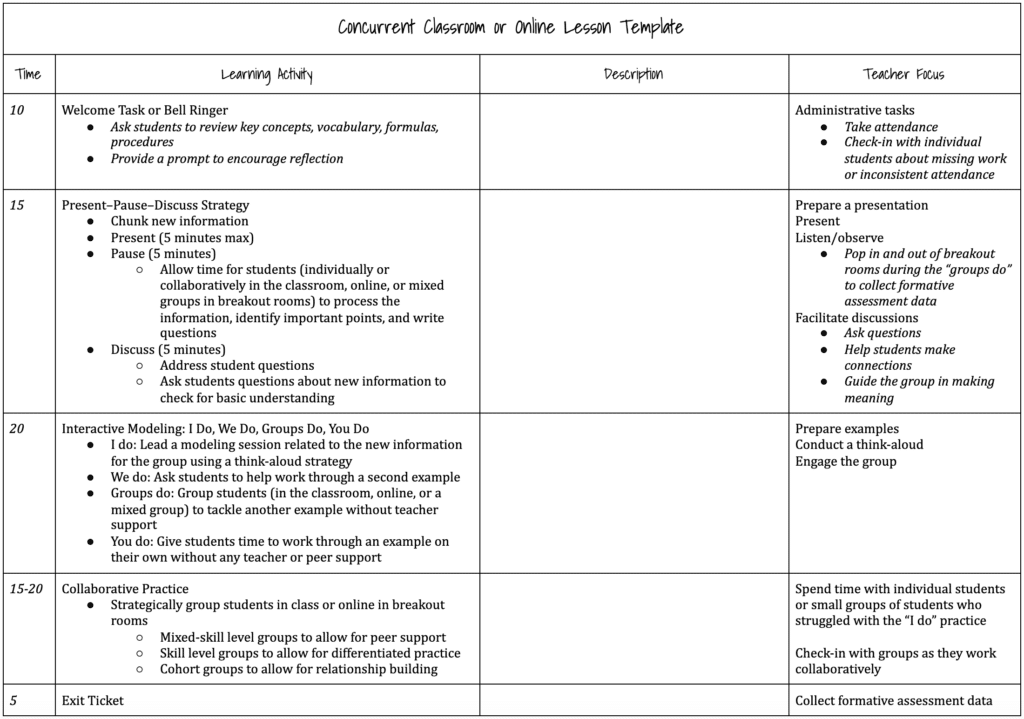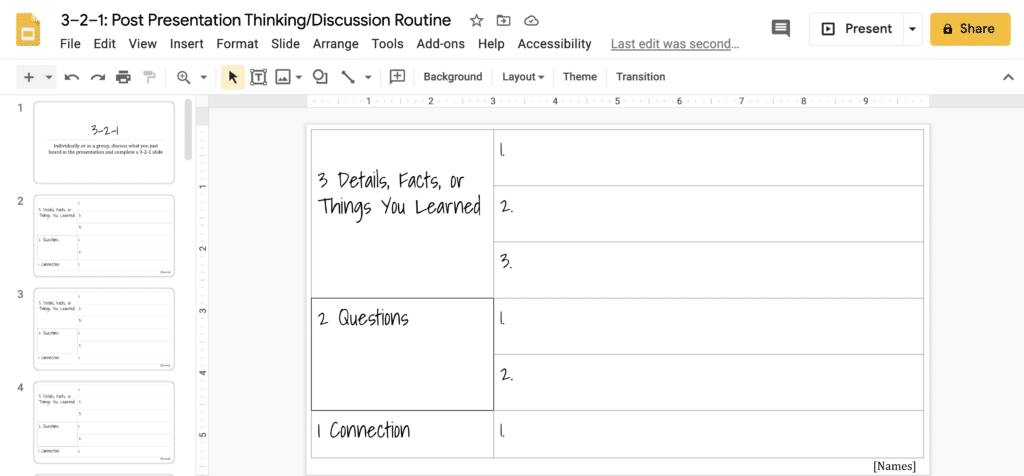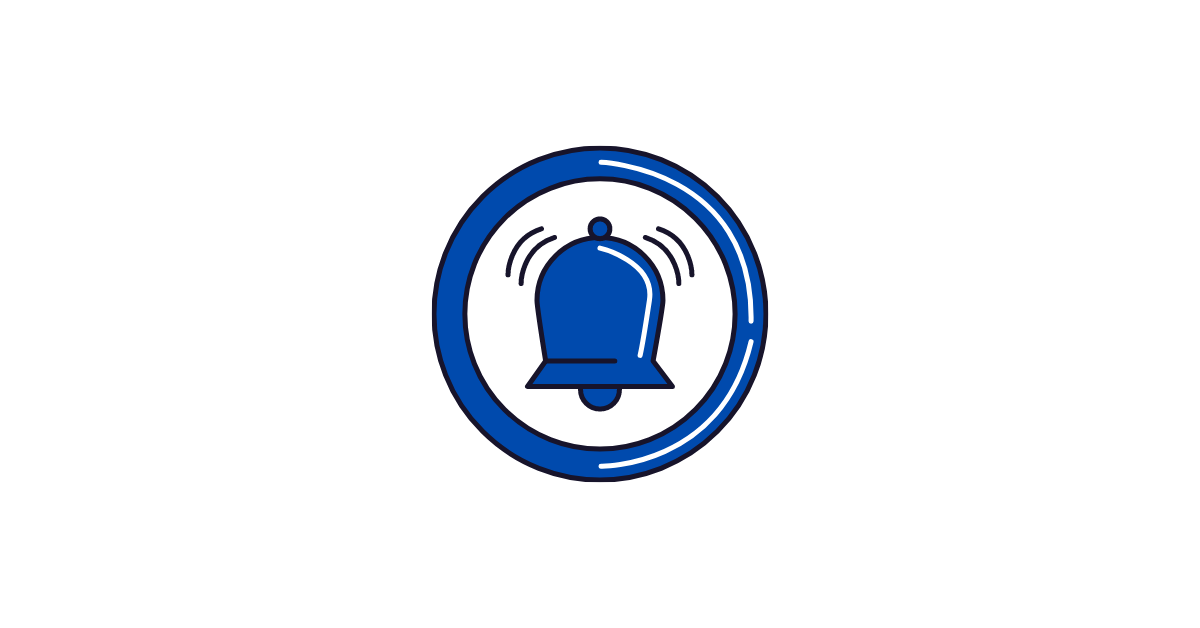Teachers juggling the concurrent classroom with some students physically attending class and others joining remotely via video conferencing are trying to balance the demands of teaching in two learning landscapes simultaneously. In a previous post, I described how blended learning models could make this challenging teaching assignment more manageable; however, that post assumes that teachers are familiar with blended learning.
In a coaching session last week, it became clear that teachers could use basic templates to help them conceptualize how to take strategies they have used in the past to create lessons that will work in a concurrent classroom (or in an online learning scenario). I am writing this post for teachers who may not have experience with blended learning models but need support designing lessons for the concurrent classroom.
The lesson template below has five sections. Each section has a different purpose and can be modified as needed given the length of a class.

Welcome Task or Bell Ringer
Begin class with a review activity, writing prompt, feedback form, quick quiz, or formative assessment. A daily review helps students to master concepts and skills by shifting that information or those skills from controlled processing to automatic processing. That way, students can dedicate their cognitive resources to other activities or tasks. A welcome routine also quickly transitions students into an activity and frees the teacher to handle administrative tasks (e.g., admitting students into a video conferencing session and taking attendance).
Present-Pause-Discuss
This is where “less is more” is critical. At this moment, when teachers and students are struggling to adjust to a new normal created by hybrid schedules, online learning, and the demands of the concurrent classroom, the message they need to hear is “less is more.” When I say “less,” I am not suggesting that students learn less—quite the opposite. By covering less, teachers are freed to spend more time supporting students in understanding, practicing, and contextualizing new information.
When teachers feel pressure to cover the curriculum or keep up with a pre-pandemic pacing guide, it is easy to understand why they spend more time introducing information and less time supporting students as they attempt to master content knowledge or skills. Instead, teachers should be encouraged to chunk new information into smaller units and invest significant time in modeling sessions, connecting new information to existing knowledge, and guiding practice. The students’ working memory can only process a small amount of information at a time, so it is more effective to keep the presentation of new information focused.
A present–pause–discuss format allows the teacher to focus on introducing one concept or skill at a time. Following the presentation, students–individually or collaboratively–spend time processing that information. Teachers can encourage individuals or collaborative groups to use a 3-2-1 format pictured below to make sense of what they heard during the presentation.

The final step is to pull the class back together for an informal discussion guided by the questions students asked about the information presented.
I do, We do, Groups Do, You Do: Interactive Modeling Session
A modeling session, or think-aloud, provides students with cognitive support in the early stages of learning and helps them develop the confidence needed to continue working independently. When I coach teachers, I encourage them to gradually release the responsibility of practice over to the students by following the “we do” activity as a group with a “groups do” task. The “groups do” allows students to work collaboratively in small groups (in-class, online, or mixed group composed of in-person and online students) to practice a strategy or skill without the teacher’s guidance or support.
As groups work collaboratively on the “groups do” task, the teacher can collect formative assessment data by listening and observing. They may walk around a physical space or visit individual breakout rooms to gather informal data. After students have time to work in small groups, the teacher pulls the class back together to debrief. Teachers can use the debrief to clarify key concepts, review another example, or provide additional scaffolds. Alternatively, teachers can identify specific students who need extra support and pull them into a teacher-led session while the rest of the class moves into the “you do” activity.
Collaborative Practice
Students often struggle when asked to practice new skills and apply new information. I encourage teachers to group students strategically and allow them to work collaboratively to practice and apply. Teachers in a concurrent classroom may want to consider the following grouping strategies.
| Mixed Skill Level Groups | Creating groups composed of mixed skill levels ensures that students who need more support have access to classmates who can answer questions or provide clarification |
| Skill Level Groups | Grouping students by skill level may make it easier for teachers to differentiate practice activities and provide additional scaffolds for specific groups |
| Cohort Groups | Forming cohort groups that work together over time (e.g., a unit of study or grading period) can help students form relationships with classmates and feel more connected to a learning community |
Teachers in a concurrent classroom can have in-class groups, online groups, or a mix of in-class and online students in groups. To create mixed groups of students–some of whom are in the classroom and others who are online–every student would need access to a device and each group would need access to a virtual room where they can engage in conversation and collaborate.
Given the current restrictions on movement in classrooms, grouping students online in video conferencing rooms may be the easiest way to foster collaboration for all students, even those who are in the physical classroom. If teachers are going to create groups composed of students in class and online, it is critical to incorporate offline learning activities into the lesson to give students a “break from the screen.”
Exit Ticket
Exit tickets are a quick and sustainable strategy for encouraging students to reflect on their learning and provide feedback about the learning experience. Teachers can include some questions designed to check for understanding to gauge the effectiveness of the lesson and identify students who need additional instruction and support.
Create an Interactive Agenda for This Lesson with Google Slides
I’ve created the slide deck below that corresponds to the five parts of the lesson described above. Teachers can use the slide deck to create an interactive agenda they can use to guide the class through this lesson. I hope these templates save teachers time as they prepare lessons for their concurrent classrooms.
Though I framed this blog post with a focus on the concurrent classroom, this lesson template could be used to design a whole group rotation in a physical classroom or an entirely online lesson.
Teaching is a challenging profession on the best of days. I think we can all agree that this is NOT the best of days (or years, for that matter). For any teacher reading this post looking for strategies and support, I want to thank you for doing this job. You matter. You are appreciated (even if it doesn’t always feel that way). Your work is important. Your students are lucky to have you in their lives.
If there are strategies, resources, additional templates, routines, or tips that you want to learn more about, let me know. I have a running list of blog topics, but I am always open to suggestions if there are topics you would like me to prioritize. Feel free to post a comment and ask!


18 Responses
Catlin,
I am learning more and more from reading your posts. Then I read the very bottom paragraph of this post and it prompted me to leave a reply. If there is any way you can tell me or help me, I am in the midst of concurrent teaching in a 1:1 classroom. I have a laptop, projector, promethean board, and a document camera. We use G Suite for Education and Google Classroom. Now the question I have is how or what do I need to make concurrent teaching successful. The in-class students and I tried it once and they could not see what I was presenting (live presentations) because the laptop was either to close to the promethean or to far away and the board was to bright. Then, the district had to go virtual (to many COVID cases per school) and I taught completely online live and I’m not sure that what I did was successful because I don’t know what the students were seeing or how well. Can you help me?
Hi Linda,
I am glad my blogs have been helpful. The current classroom is extremely challenging. My suggestion is not to spend much time on direct instruction with the whole group. If you plan to say the same thing the same way to everyone, I would suggest making a short video so in-class and online students can watch it and control the pace of the video (pause, rewind, rewatch). If you feel like you need to dedicate time to the transfer of information, I would suggest designing a station rotation without the physical movement. Below is a link to a planning template that may be helpful. If you break the group into three, then you can provide small group instruction (offline for the groups in class) and online for the online group. Then they can self-pace through the other stations while you work with other groups. Again, this gives students more control over their learning, which is beneficial. I would also end each class with a quick exit ticket to check for understanding. This is a nice way to assess what they learned and what they are still struggling with.
Station Rotation Template
I hope that is helpful!
Catlin
Hi Ladies,
One thing that has saved me is doing SUPER short presentations in class (like 1 minute per student) and breaking them up during the week, so just a few per day. For regular presentations, the kids record them and share with the class, either in your google classroom, or on a shared Google doc works as well! Then, you’ll assign a few presentations to each group, and they will be required to write a review, ask questions, comment, etc. Otherwise one group is presenting while the others are just on their phones:(
This is an AWESOME resource, thank you for sharining!
Hi Catlin,
I love this template. Once I make a copy of it, can I type into it? I’m having trouble doing that so I’m not sure what to do…Please help.
Thanks so much,
Karen
To clarify, I meant the slide deck template of the Interactive Agenda.
Thanks,
Karen
Hi Karen,
If you click “File” at the top and select “Make a copy,” it should save a copy directly in your Google Drive that you can edit. Were you able to make a copy?
Catlin
Hi Catlin,
Thank you for sharing this resource. I shared it with the #MTBoS. It can really be adapted for any subject. My current school is 1 to 1, my first time ever. I am excited to try it, especially as “choice.” That is my PD goal for the foreseeable future, building in choice to engage more students. Example, I have a student who is very focussed in class, does well on tests, and just.won’t.do homework. I see this kind of lesson would give me more information and perhaps he can help a peer that is struggling.
Anything you can share or direct me to that makes math less me yakking and the students more self directed is always appreciated.
Hi Amy,
It’s wonderful to hear from you! I’m thrilled you are finding these resources helpful. Thank you for sharing them with other educators.
I actually just read this FABULOUS article about a math strategy that would be great in person or online. I think you might enjoy it!
https://www.edutopia.org/article/adapting-effective-math-collaboration-activity-distance-learning
Take care!
Catlin
Bonjour,
I will share the concurrent template with my collègues. It’s great for our conventional school that offer concurrent learning.
Would you have a template to help teachers organize their lesson sequence in a hybrid and concurrent model. Our teachers find it difficult to plan for in classroom learning with cohort A on Mondays and Tuesdays and then plan the learning in google classroom for the rest of the week. And vice versa for cohort B. They feel that they are planning for in person classes and on line classes. We have been trying to get them to plan in Google Classroom as if all student were online at home and when they do get a chance to see students in class they can facilitate, differentiate etc. The change in practice has been difficult for teachers. Any tips? Love your work. Thank you!
Hi Carole,
I have a curriculum mapping template in my Getting Started with Blended and Online Learning course. Most of the templates I’ve created for the concurrent classroom are on my blog. I’ll continue to do my best to share resources to support teachers in this moment.
Take care.
Catlin
I stumbled across this blog as I look for interactive engagement strategies for the teachers I support. Thank you for what you are doing to make my job easier.
You’re welcome, Regina!
I love the lessons. I’ve been confused with the online piece but the strategies are great!
Great Post!
I do, you do, we do is an amazing strategy for all ages and when working with adults.
Glad I this blog!!
Catlin,
I am working on concurrent instruction for physical education (both elementary and secondary) – during the COVID school year. It is riddled with challenges of in-person social distancing, low aerobic activities, limited equipment that can be sanitized, etc. However it is important and vital that students participating in in-person learning have the opportunity to move both for physical and social-emotional health. Therefore I struggle with the simultaneous instruction – can you provide any suggestions?
Thanks,
Debbie DeFranco, Supervisor Health, Physical and Driver Education & Athletics
Hi Debbie,
I can see how the movement involved in your course would be challenging given the current restrictions in place. I wonder if a flip-flop design as described in this post might be helpful.That way, you could guide one group (in class OR online) through the more physical parts of a lesson while the other group watches a video, listens to a podcast, or reads a text on a topic relevant to the curriculum.
I have not coached a physical education teacher on this approach yet, so there may be other folks who are finding ways to make this work and can chime in!
Take care.
Catlin
I was thinking of creating groups composed of students in class and online. I had not thought about it being critical to incorporate offline learning activities into the lesson to give students a “break from the screen.” This had not crossed my mine. I have been feeling like it would be more online for student’s at home than it is now. I will have to give this some more thought and planning.